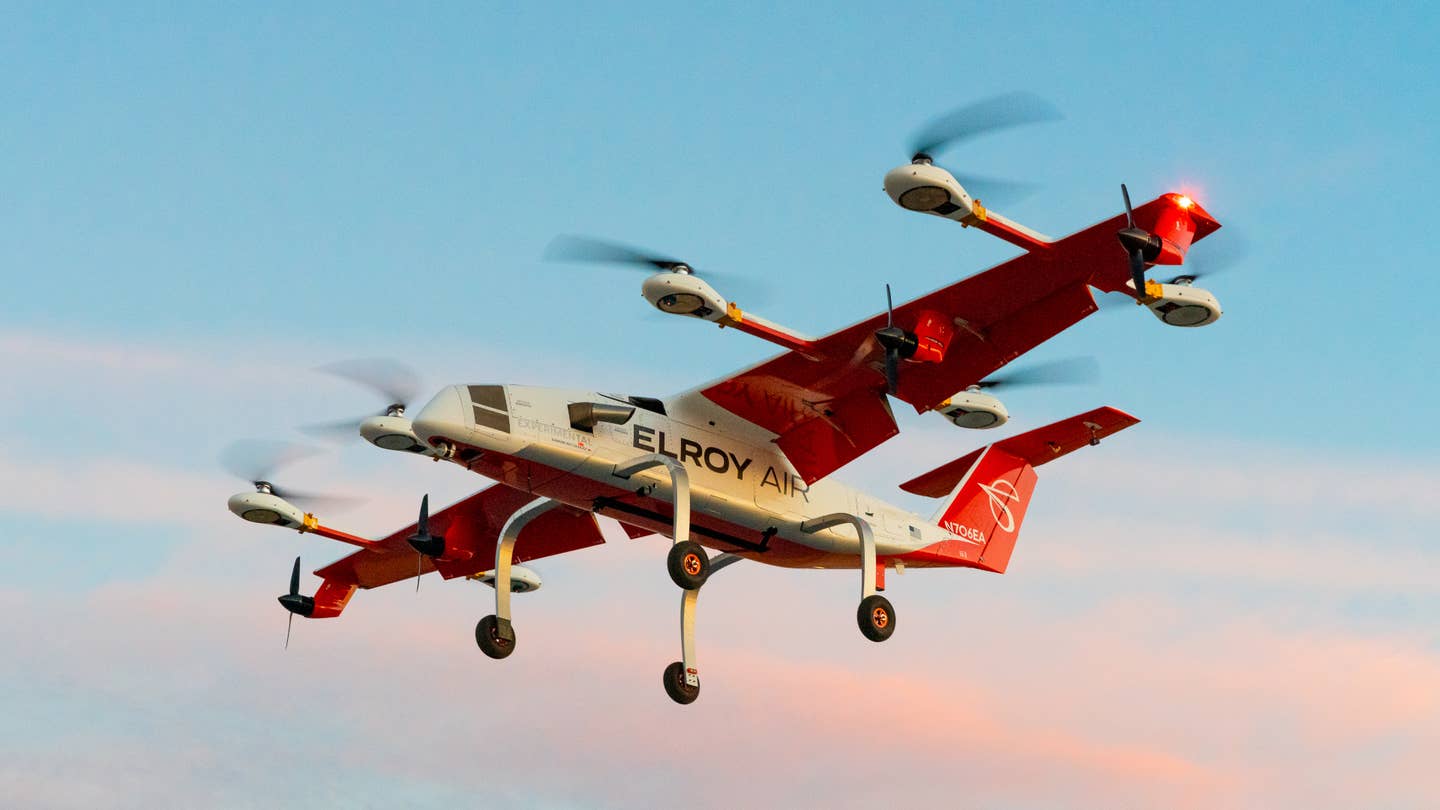U.S. Marines to Get Autonomous Cargo Drone Demo This Summer
Flight testing of Elroy’s Chaparral, a hybrid-electric vertical takeoff and landing (hVTOL) design, is scheduled to begin in July.

Elroy Air’s hybrid-electric vertical takeoff and landing (hVTOL) Chaparral C1 takes off on its maiden voyage in November. [Courtesy: Elroy Air]
In just a few months, the U.S. Marine Corps will get its hands on an autonomous aircraft designed for military resupply missions.
Defense contractor Leidos and autonomous aircraft developer Elroy Air on Tuesday said they have been approved to demonstrate an autonomous aircraft prototype for the U.S. Navy and Marine Small Tactical Unmanned Aircraft Systems (UAS) program office. Flight testing is scheduled for July at the U.S. Army Yuma Proving Grounds (KLGF) in Arizona.
The companies said the aircraft’s development and flight testing are part of a contract awarded last year for them to demonstrate autonomous resupply capabilities for Marine Corps. Tim Freeman, senior vice president and business area manager of airborne systems for Leidos, said the partners will showcase the aircraft’s capabilities for other branches of the military as well.
At Yuma, Leidos and Elroy will demonstrate the latter’s Chaparral system, which Elroy describes as a lift-plus-cruise, hybrid-electric vertical takeoff and landing (hVTOL) cargo aircraft. Among the company’s stated use cases for Chaparral are commercial logistics, industrial cargo, humanitarian aid shipments—and military resupply. According to Elroy, the hVTOL’s maiden voyage in November was the world’s first flight of such an aircraft.
Chaparral is a candidate for the military’s Medium Aerial Resupply Vehicle-Expeditionary Logistics, or MARV-EL, program. According to Naval Air Systems Command, MARV-EL aircraft “will be the ‘middle-weight’ unmanned logistics asset, providing combat sustainment to Marines when ground or manned aviation assets are unavailable due to threat, terrain, weather, or competing priorities.”
A combination of distributed electric propulsion and a turbine-based generator, which runs on an unspecified kind of liquid gas, powers Chaparral's eight vertical and four forward propellers, with fixed wings for cruise. Elroy says this configuration gives the aircraft greater energy density and range than a pure electric design.
Chaparral has an estimated 300 sm (260 nm) range and 125 knots cruise speed. The aircraft is large for an autonomous design—more than 19 feet long with a 26-foot wingspan—yet it can be reconfigured to fit within a 40-foot shipping container. It comes with a variety of modular cargo pods that can carry up to 300 pounds.
Elroy so far has obtained three aircraft development and testing contracts with AFWERX, the innovation arm of the U.S. Air Force, and a Cooperative Research and Development Agreement with U.S. Special Operations Command.
In 2023, the company completed autonomous cargo handling and delivery demonstrations at Travis Air Force Base in California, showcasing Chaparral’s ability to locate and navigate to a cargo pod, load and secure it, taxi, and takeoff entirely on its own.
In August, Elroy formed a Defense Advisory Board comprising high-ranking former U.S. military officials from Navy, Army, and Special Operations Command to help it secure future government and defense acquisitions.
Like this story? We think you'll also like the Future of FLYING newsletter sent every Thursday afternoon. Sign up now.

Sign-up for newsletters & special offers!
Get the latest FLYING stories & special offers delivered directly to your inbox






